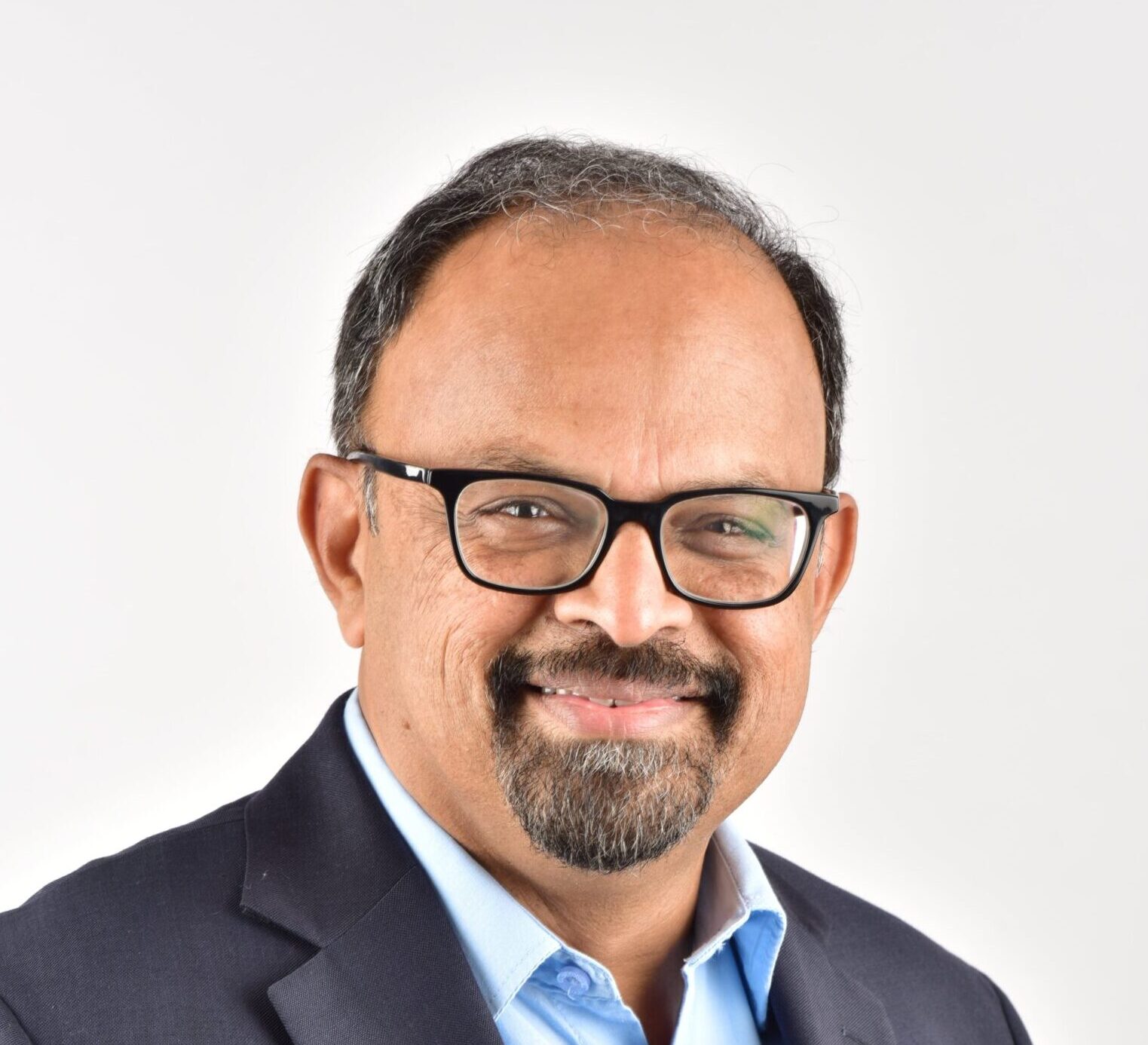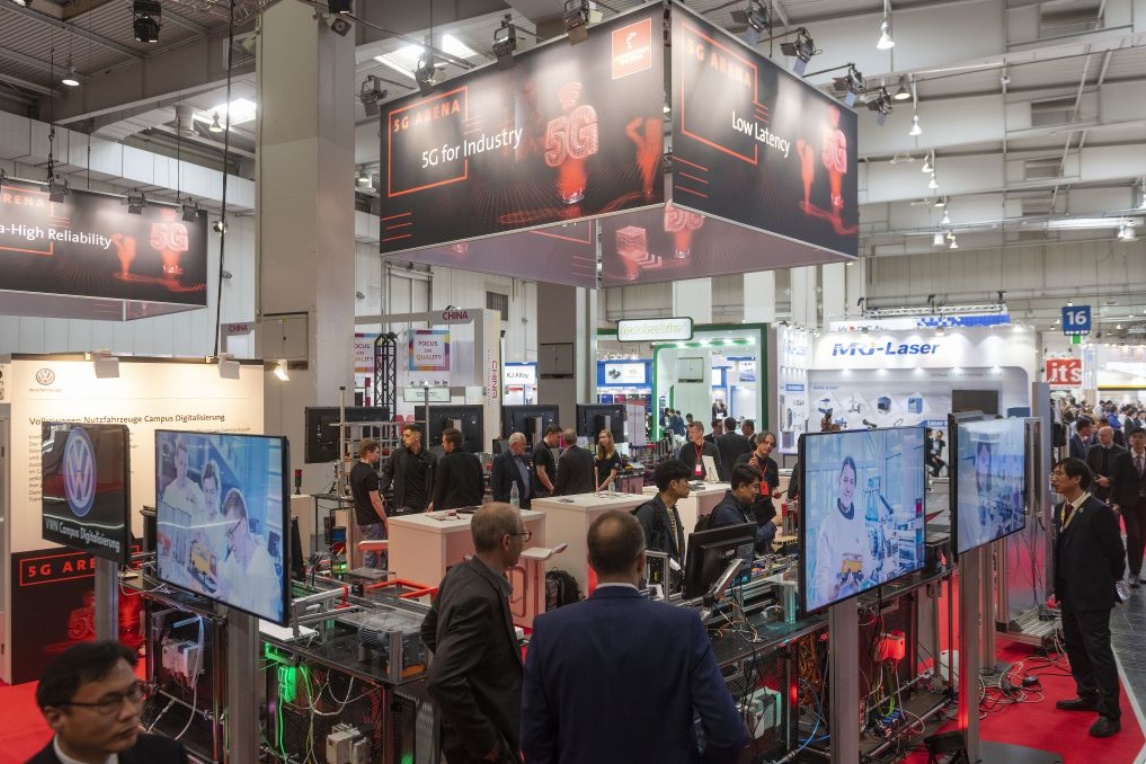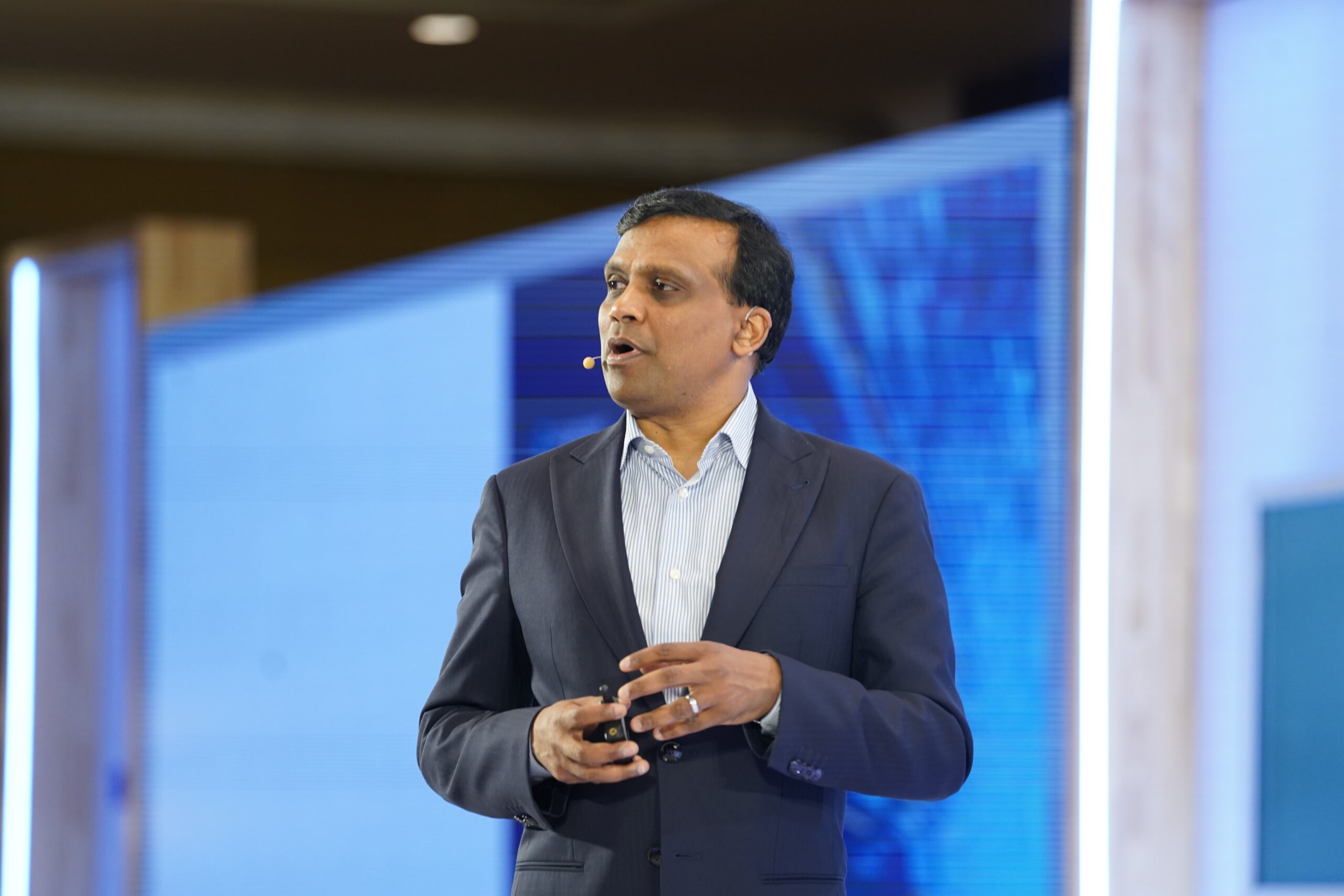Make in Odisha – the Ecosystem is Ripe for a Manufacturing Resurgence
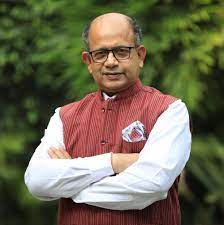
Dr. Patnaik underlined the cost of capital and the cost of transaction as two of the biggest issues in the way of true entrepreneurial growth in the sector
On day three of Industry Samurai Conference 2021 held virtually, we had the privilege of hosting Dr Amar Patnaik, Member of Parliament, Rajya Sabha, as the Keynote Speaker.
A former bureaucrat, Dr Amar Patnaik is a Member of Parliament in Rajya Sabha from Odisha representing the Biju Janata Dal (BJD). With a PhD in institutional economics, he is a member of the Joint Parliamentary Committee on Personal Data Protection and the Finance Committee. He is also the National Spokesperson of BJD. Dr Patnaik often writes on issues relating to economics, finance, technology, data, and the environment.
He was associated with the United Nations and the World Bank for global external audit assignments and has been a team leader of India’s External Audit Mission to several countries.
Dr Patnaik holds a bachelor’s degree in Law from St Stephens College at Delhi University; an MBA in Finance and Systems from Xavier’s Institute of Management, Bhubaneswar; and a Master’sProgram in Public Management from Lee Kuan Yew School of Public Policy, Singapore, and the Kennedy School of Government, Harvard University. He was a British Chevening Gurukul Scholar in 2013 to pursue studies at the London School of Economics.
Dr Patnaik’s scholarly work on public policy is titled “Institutional Change and Power Asymmetry in the context of Rural India” and is available on Amazon. Sharing, edited excerpts of the speech and a Q&A session with DMI’s editor Aanand Pandey.
Dr Amar Patnaik: I must congratulate you for organising an award ceremony to celebrate the industry leaders and their achievements. This assumes significance at a time when we have hopefully negotiated a pandemic even as we are in the recovery phase. What kind of recovery; what is the way forward, what are the basic assumptions that are being questioned during the pandemic for an industry leader, and for the industry at large? These are some of the questions that arise in the minds of not just the leaders of the Indian industry, but also those of the world. For example, these questions are being discussed at the global level at theInternational Monetary Fund (IMF) as well as the World Bank.
The industrial sector is a crucial part of the economy, for it unlocks the value and the potential of the country or region or state. Industry unlocks the value of capital, the value of land, skills, the managerial progress—it shapes the aspirations of people.
The primary sector is very important, as it provides food security – the basic need of a human being. As you would have seen during the pandemic, agriculture saved us with a notable growth rate of about 2-3%. However, no country can undermine the importance of the industry since it creates several forward and backward linkages. These linkages have a multiplier effect on the economy. They generate new value chains, new markets and differentiated products.
In India, the gross domestic product (GDP)sees a contribution of close to 20% from the agriculture sector, 25% from the industrial sector, while a large chunk of the contribution comes from the services sector, which contributes about 54% as per the latest statistics.
While aiming for technological innovations, the need for creating jobs in the manufacturing sector cannot be overemphasized in our country. Therefore, not only has the government brought down the corporate tax rate to one of the lowest in the world, but it has also given the necessary support with improved ease of doing business. The ecosystem is ripe for an industrial manufacturing resurgence.
With the government’s recently announced performance-linked Incentives(PLI) Schemes coming into play in several sectors, this is really giving good dividends in what we have seen so far. I see a resurgence of the manufacturing sector in the long run in our country.
As the green shoots of recovery emerge post the pandemic, the most important thing the manufacturing sector can keep in mind is two things. First, let’s all strive to make it a proper V-shaped and not just a K-shaped recovery. There are critics who say that it’s probably a K-shaped recovery because the rich are recovering but the poor are falling behind, while about 10 crore middle class people have fallen back into poverty. And I think our industry leaders are conscious of the demands from the ecosystem and the country. They would do something about this aspect while making a smart recovery.
The other important aim is climate change. I recently returned from Europe where we discussed at length the European Union’s latest initiative to impose a carbon border adjustment tax. If that happens, all the products that we export to Europe would become more expensive. Such an initiative is being undertaken to keep climate change in mind. In fact, in Germany, a Green Party-backed alliance is forming the government.
We must also move in this direction. We should make all our innovations, recovery, value chain systems, values, relationships, the entire business processes in such a manner that it is green. It will not only, to some extent, satisfy India’s ambition for achieving reliance on renewable power resources, but it will also hit home the realization that net-zero is not really zero, it is a net positive.
If we are climate-conscious now, our recovery becomes determined by what is going to affect the climate around us. It is only then that we are addressing the basic existential factors. A climate-conscious recovery path is the smartest way to go about it. We can be a leader in this journey, compared to a country like China or any other economy, which remains manufacturing dependent.
Another point I would like to make is about the circular economy. I think the time has come when we must think about the circular economy that is about the 3Rs, namely: Reduce, Reuse and Recycle. Ours and the industry’s efforts in the entire manufacturing value chain systems of different sectors are to reuse and recycle, but most importantly, we have to emphasize the reduction of waste. If we ensure that minimum waste is generated, then we would be taking care of one of the biggest problems of a smart climate-conscious recovery. Then, of course, the sequence of reuse and recycling would happen.
To cite the example of Odisha, one of the things that we have done in the last 21 years is ensure that the policies are progressive. We have the best start-up policy by common admission in the country. At the same time, our industrial policies are extremely attractive. We have identified six focus sectors where we want the foreign direct investment (FDI) and the domestic industries to come in.
We believe that the entire process must be infrastructure-led. Therefore, we have developed private ports. For instance, DhamraPort is the largest private port in terms of handling cargo in the country. With a 480km-long coastline, we have three more ports that are being developed. The road connectivity in the hinterlands of Odisha remains the best. The railway connectivity is very much there and is still being improved.
We have the largest resources of minerals in the country. So, the levers of production, in a more competitive way, are being provided. And for those who come here, it is important to have skills. For instance, we have built the World Skills Centre in Bhubaneshwar, which remains the largest building in the country. For us, skill education remains more important. This way, a pool of skilled manpower remains available to the industry, and they don’t need to hire it anywhere else.
For the people who are coming from outside into the state, we have created a congenial atmosphere for them as well as their families. Many surveys have pointed out that Bhubaneshwar is the smartest liveable city in the country. Bhubaneshwar has turned into an educational and healthcare hub. There is another smart city that is coming up, Rourkela.
Question: Industries have been hit hard by the pandemic. What is your advice to this sector that is still reeling under the impact of the crisis?
Dr Amar Patnaik: Having seen the first wave of the pandemic quite closely as someone who has tried to help people through the reverse migration, in getting them back into the state and providing them with food, health support and shelter, I have a few observations to make. Industrial production depends chiefly on capital, labour, and skills as among its major components. The point here is that neither capital can produce goods without labour, nor labour can function without capital. Both continue to remain interdependent.
The first wave showed us that when it came to a crisis, the capital somehow could not take care of labour. The government had to intervene. I am not saying that the private capital can entirely look after the labour. There have been great instances where private capital has looked after their labour, giving them complete salaries, a place to stay through the entire period, and more.
However, there remains a majority who didn’t look after the labour, with the result that even today, many of the migrant labourers who had gone back to their home states have not returned. Therefore, the pressure on the national rural employment guarantee scheme has increased because the workers need jobs within their own states, and their families are not willing to let go of them after this experience. Had there been a symbiotic relationship between capital and labour, then the situation would not have arisen because both would have understood each other. This is one learning.
Let us very frankly admit and correct ourselves. If we do that, it would be the single most significant contribution to the entire labour market, labour environment and the economy. It would also help in formalizing the process, which is very important now, we cannot have 90 per cent of our population working in the informal sector or the unorganised sector. We have to formalize and organize them. The process, in my understanding, has now started. What had not happened for decades since independence, is happening now, which is quite a positive sign. Once that happens, it is only then that the industry, the capital and the labour can work in harmony and can actually complement each other in spurring growth, even during a crisis.
Even more, this is the time we can attempt new things when it comes to innovation, digitalisation and climate action. As I mentioned earlier, the net-zero is not really zero but it is not positive. Therefore, if you invest in climate-related investment while manufacturing or producing anything, it is going to pay you dividends in the long run.
Most of the industry always plans for the long term and not for the short term. Some of these things which I mentioned are important for the long-term sustenance of the Indian economy. Its contribution has to increase from 20 per cent at the current level to at least 35 per cent over a period of time considering that agriculture is not becoming quite remunerative. Currently, people are not moving away from paddy, for instance, and a lot of the crop is wasted. We spend about Rs 1,80,000 crores on food subsidies.
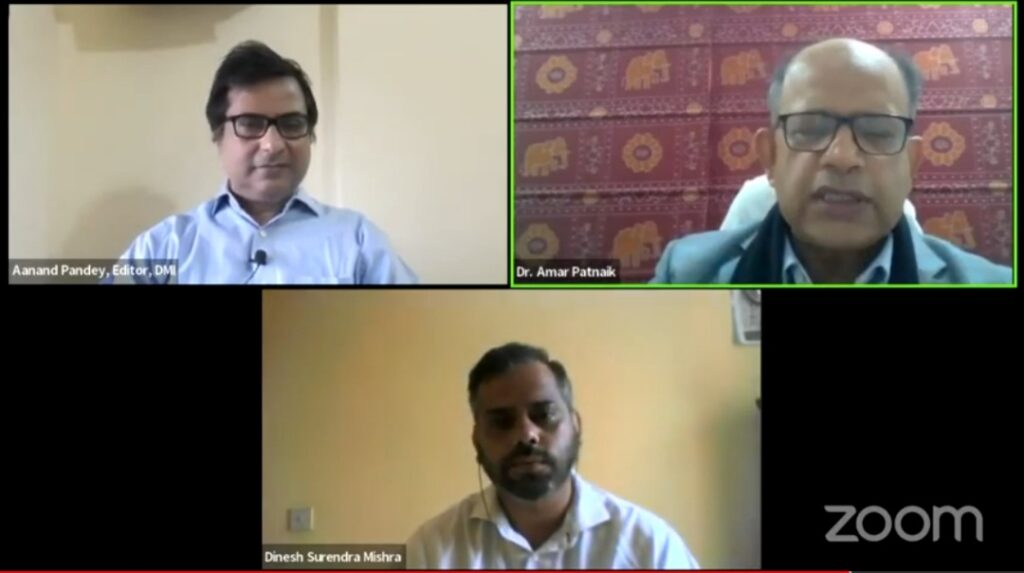
Slowly we need to produce sufficiently to be self-reliant, to be able to meet all our food needs domestically and also to have a buffer or surplus, which will take care of all the crisis situations, just like the one that we faced recently. But beyond that, it’s not necessary. So, these people have to be given jobs in the industry. Therefore, if our industry formalizes these in tandem with government policies, it will actually augur well for both, the agriculture sector and the country as a whole.
The policy ecosystem for manufacturing is moving in the right direction and has to move forward in terms of tax rates and ease of doing business, among others factors. The labour laws went through a change; we have a labour board; they have been made industry-friendly. The skill education in the country has picked up. There are policies to attract talent and innovation, right at the school level. Ultimately, it is skill and innovation that will drive the manufacturing sector. This is, in fact, something that has driven manufacturing anywhere in the world.
The direction of a policy like the Production-LinkedIncentive (PLI) Schemes is extremely good and right for the manufacturing sector. It is for the industry to take advantage of and gear up manufacturing.
There are, however, two issues that are the cause of concern. First is the cost of capital. I feel that in India the cost of capital is high. In a letter written to the Prime Minister, I have stated that we have to discard the British legacy of doing a credit appraisal in a particular way and giving credit in a particular way, we have to now think about a transformational change to bring our cost of capital to the industry at a lower level.
If people taking from non-banking financial companies for start-ups or for instance, particularly in the micro and small enterprises sector, have to pay 20% and above as the cost of capital, it is not possible for them to have a return on investment (ROI) of more than 20% then. Therefore, the biggest concern for all of us should be the cost of capital. I am a great believer that a lot can be done to decrease the cost of capital to our industry in our country through a market-determined mechanism and not merely through the provisioning of government subsidies.
The second question is the transaction cost of doing business, which must be reduced. This is what is going to actually give space to the manufacturers to actually price the products later on. These two issues have to be addressed to move to a market-determined mechanism. The industry should think about how to go about it. I have already written to the Prime Minister and I’ve been raising it with all bankers. Ultimately, it is our industry leaders who have sustained our economy for so long. They have been there through the independence movement to the various revolutions such as the agriculture revolution, industrial revolution and the services revolution. They have to now take charge; they have to become bolder.
Question: What are the major competitive strengths of our economy that our industry can leverage upon?
Dr Amar Patnaik: In Odisha, we have identified six focus sectors where we have a competitive advantage. So, for any private capital trying to invest in these sectors, it starts with an edge right from the beginning because we have the competitive advantage in Odisha in terms of land, labour, capital and skills. For example, there are industries like agro-processing, food-processing and handloom textiles that provide a high ROI. In fact, agro-processing is the least developed industry in India, whereas there are countries in South America whose mainstay of their economy is agro-processing. By focussing on this very fast-growing and in-demand sector, we can actually be a leader in this space.
Further, we have developed Odisha’s single-window investor facilitation portal, Go-Swift (investodisha.gov.in). While there are many states that have come up with a single-window platform or portal, what is different in the case of Odisha is that support is provided all through the value chain, and all clearances can be sought through this particular portal. This way, the transaction costs come down significantly.
Previously, there used to be issues related to land banks not being there. Now we have developed land banks; there are about eight industrial clusters, in addition, there are many small industrial land parcels, which have been kept together in one place. An industrialist can easily acquire land immediately.
Odisha has excellent connectivity in the form of air, rail and road transportation. Now, for IT connectivity, we have the software technology park. Bhubaneswar has developed into a hub for health and education. Top leaders or managers who get posted in Bhubaneswar or anywhere in Odisha, will experience access to good education and health. Odisha is home to prestigious medical facilities such as the All-Indian Institute of Medical Science (AIIMS), Apollo, Advanced Research Medical Institute (AMRI).
We have top-notch institutions like the IIT and the IIM. Besides capital, another thing that the industry needs is labour. Odisha offers the best level of labour to the world. The skill education has been given a huge push in Odisha. The Industrial Training Institutes(ITIs) have now almost become like engineering colleges. Those who are coming out of the ITI are now very smartly skilled. They are industry-ready, so the cost of labour would be also less and managing them would not be an issue because they will be local labour. They have the dexterity or the skills for micro kinds of work.
Traditionally, because of temple architecture, miniature paintings, filigree works, our womenfolk who undertake most of these works are already an integral and important part of the workforce. In the handloom and crafts industry, skilled labour is immediately available. They’re not as expensive as they are anywhere else.
All this places Odisha on a quiet sound footing for having industrial growth. Previously, people used to know Odisha as a place where there was famine and food deprivation. That has been transformed. Now if you remember that particular belt that became known as a place of hunger [Kalahandi], has now become the rice bowl of the state and the country. The entire irrigation channel in the Indravati project – covering the areas of Bargarh, Sambalpur, western Odisha, Kalahandi and Koraput – has helped make the region abundant in rice production. They produce so much rice that the Food Corporation of India(FCI) is unable to procure them.
As regards health, the state government’s new policy, which remains quite unique provides a right to health to the people – you just have to go to a hospital and you get it free. Under this policy, treatment at government hospitals as well as about 200 private hospitals under the panel are also free. This kind of policy environment has created a space for young people who used to earlier spend about 60% on out-of-pocket expenditure for health, now they don’t have to do it. In addition, we have educational hubs, which are spaces for people to think, innovate, and contribute to growth. The industries and investment coming into the state would have no difficulty in engaging these people in reaping the benefit of the stability that has been created in health, education and overall socio-political climate.
I believe that unless the states grow, the country cannot grow. A few states can’t lead the country. Those times are gone. So, wherever there is potential in a state, they should be allowed to grow much more and much further. This would provide an impetus to the country’s growth.
The Centre should facilitate a process whereby those states who have created a sound, reasonable, and enduring climate for industries should be supported. The relationship between the Centre and states are very important for the industrial climate of the country. We, in Odisha, are very well placed for helping make an industrial resurgence in the country.
By- Rajiv Dogra


